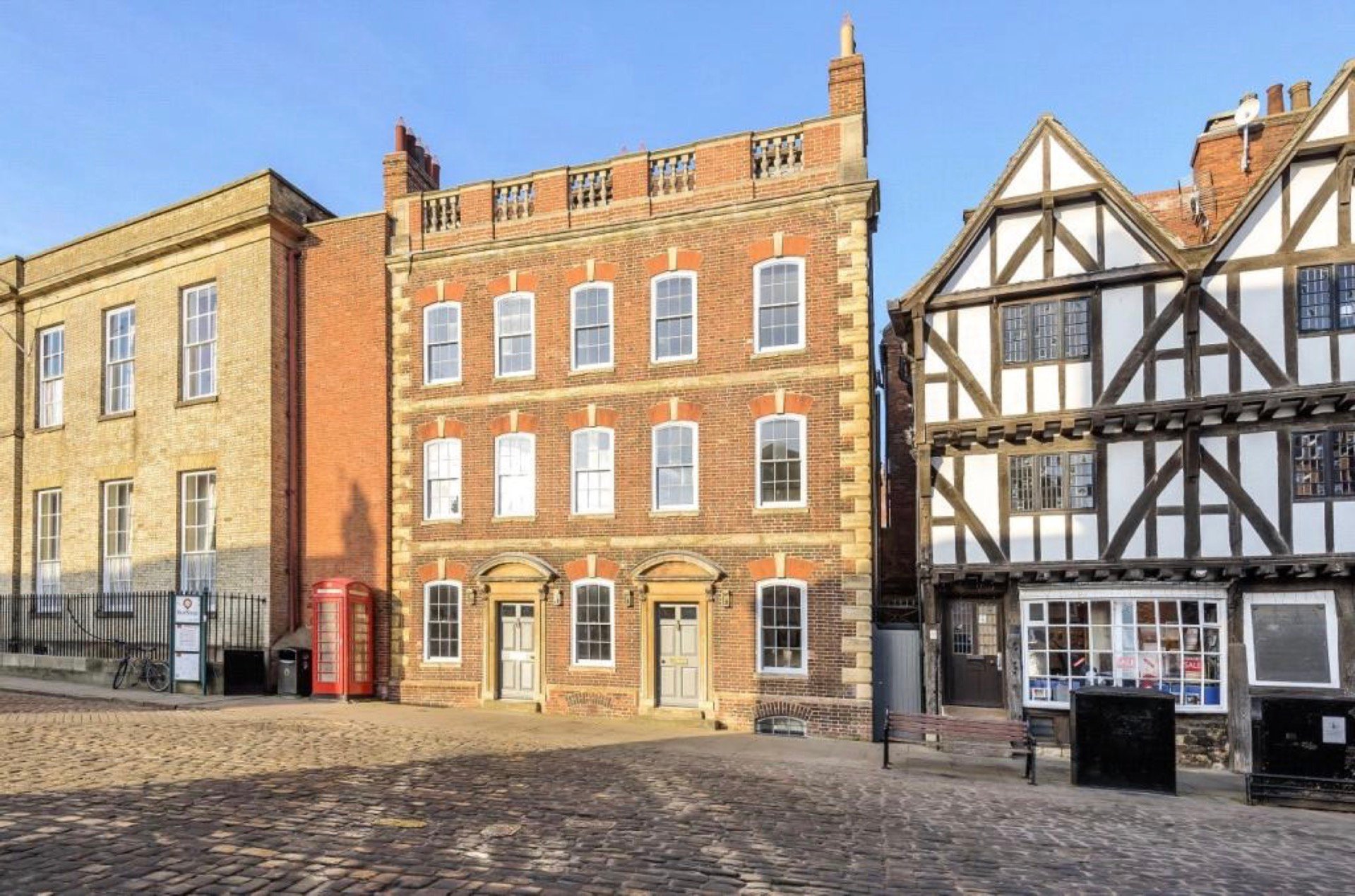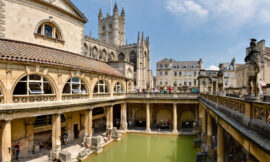Introduction
Castle Hill in Lincoln is a historic area that forms the heart of the city’s ancient heritage. Nestled between Lincoln Castle and Lincoln Cathedral, Castle Hill is a square and public space that has played a central role in the city’s history for over a thousand years. This area is not just a link between two of Lincoln’s most iconic landmarks but is also a site of significant historical events, vibrant markets, and cultural gatherings. This essay explores the historical development, architectural significance, and cultural role of Castle Hill, highlighting its enduring importance to Lincoln and its people.
Historical Background
Castle Hill’s history is deeply intertwined with that of Lincoln Castle and the broader city. The area’s origins date back to Roman times, when Lincoln, known as Lindum Colonia, was an important Roman settlement. The strategic location on a hill overlooking the River Witham made it an ideal site for a fortified city, which the Romans exploited by building walls and roads that laid the foundations for the city’s future development.
After the Norman Conquest of 1066, William the Conqueror recognized Lincoln’s strategic importance and ordered the construction of Lincoln Castle in 1068 on the site of the old Roman fort. This castle was part of a network of fortifications intended to secure Norman control over England. Castle Hill, situated immediately in front of the castle’s main gate, served as a gathering and administrative space, reinforcing the area’s status as the civic and military heart of medieval Lincoln.
Throughout the medieval period, Castle Hill was a bustling hub of activity. It hosted markets, public meetings, and legal proceedings, reflecting its role as the center of civic life in Lincoln. The proximity to both the castle and the cathedral meant that Castle Hill was often the site of significant events, including royal visits, civic celebrations, and military parades.
Architectural and Urban Significance
Castle Hill is characterized by its unique architectural setting, flanked by two of Lincoln’s most important landmarks: Lincoln Castle and Lincoln Cathedral. This juxtaposition of military and religious architecture creates a striking and historically rich environment that is central to Lincoln’s identity.
1. Lincoln Castle
Lincoln Castle, constructed by William the Conqueror, has been a focal point of power and administration in Lincoln for nearly a millennium. The castle’s massive stone walls, gates, and towers dominate the western side of Castle Hill, creating an imposing backdrop that reflects its original purpose as a fortress and seat of power. Over the centuries, the castle has served various roles, including as a royal residence, a courthouse, and a prison. Today, it houses one of the four surviving original copies of the Magna Carta, drawing visitors from around the world.
The castle’s architecture reflects the evolution of medieval military design, with features like the Lucy Tower, the Observatory Tower, and the Victorian Prison, each representing different periods in the castle’s history. The castle’s grounds provide panoramic views of the city and surrounding countryside, underscoring the strategic importance of its elevated position on the hill.
2. Lincoln Cathedral
On the eastern side of Castle Hill stands Lincoln Cathedral, one of the finest examples of Gothic architecture in Europe. Completed in 1311, the cathedral was once the tallest building in the world and remains a masterpiece of medieval engineering and design. Its soaring spires, intricate stone carvings, and expansive nave make it a stunning architectural counterpoint to the more austere and defensive structures of the castle.
The cathedral’s presence on Castle Hill emphasizes the close relationship between the church and state in medieval England. The proximity of the cathedral and castle reflects the dual nature of power in the medieval city, where religious authority and secular rule coexisted side by side.
Cultural and Social Significance
Castle Hill is not just an area of historical and architectural importance; it is also a vibrant public space that continues to play a vital role in the cultural and social life of Lincoln.
1. Markets and Fairs
Throughout its history, Castle Hill has been a center of commerce and trade. During the medieval period, it was the site of regular markets and fairs, where merchants and traders from across the region would gather to sell their goods. These markets were vital to the local economy and helped establish Lincoln as a major commercial hub in medieval England.
Today, Castle Hill continues to host markets and fairs, including the popular Lincoln Christmas Market, which draws thousands of visitors each year. This event, which features stalls selling crafts, food, and gifts, transforms Castle Hill into a bustling festive marketplace, echoing the area’s medieval past.
2. Public Gatherings and Events
Castle Hill is a popular venue for public gatherings and events, including historical reenactments, parades, and cultural festivals. The area’s open space and historic surroundings provide an atmospheric setting for these activities, which celebrate Lincoln’s heritage and bring the community together.
The annual Steampunk Festival, which takes place in Lincoln, often utilizes Castle Hill as a backdrop for its fantastical displays of Victorian-inspired fashion, gadgets, and performances. This event, along with others hosted at Castle Hill, highlights the area’s versatility as a public space that can accommodate a wide range of cultural expressions.
3. Tourism and Heritage
Castle Hill is a key attraction for tourists visiting Lincoln, offering a gateway to the city’s most iconic landmarks. The area’s historical significance and architectural beauty make it a focal point for guided tours, educational visits, and heritage walks. Visitors to Castle Hill can explore the castle, the cathedral, and the surrounding medieval streets, gaining a comprehensive understanding of Lincoln’s rich history.
The preservation and promotion of Castle Hill as a heritage site are central to Lincoln’s tourism strategy. Efforts to maintain the area’s historic character include the careful management of the cobblestone streets, the restoration of historic buildings, and the interpretation of the area’s history through signage and guided tours.
Challenges and Preservation Efforts
While Castle Hill is celebrated for its historical and cultural value, it also faces challenges related to preservation and urban development. The area’s age and the wear and tear from both environmental factors and heavy foot traffic necessitate ongoing conservation efforts to protect its historic fabric.
One of the key challenges is maintaining the balance between preserving Castle Hill’s historic character and accommodating the needs of a modern city. This includes managing traffic flow, ensuring accessibility for all visitors, and providing the necessary amenities without compromising the area’s historic appearance.
Preservation efforts are coordinated by local authorities, heritage organizations, and community groups who work together to safeguard Castle Hill’s unique heritage. These efforts include the restoration of historic buildings, the conservation of archaeological sites, and the enhancement of public spaces to ensure that Castle Hill remains a vibrant and accessible part of Lincoln’s urban landscape.
Conclusion
Castle Hill in Lincoln is a historic and cultural landmark that embodies the city’s rich heritage and enduring legacy. Situated between Lincoln Castle and Lincoln Cathedral, Castle Hill has been a center of civic, military, and religious life for over a thousand years. Its architectural significance, cultural vibrancy, and historical importance make it one of Lincoln’s most treasured sites.
As a public space, Castle Hill continues to play a vital role in the life of the city, hosting markets, events, and gatherings that celebrate Lincoln’s past and present. The ongoing preservation and promotion of Castle Hill reflect the community’s commitment to honoring its heritage while embracing the opportunities of the future.
Whether as a site of historical exploration, a cultural hub, or a picturesque setting for public events, Castle Hill remains at the heart of Lincoln, connecting the city’s storied past with its vibrant present. Its enduring appeal and significance make it not just a place of historical interest but a living part of Lincoln’s identity and community.



